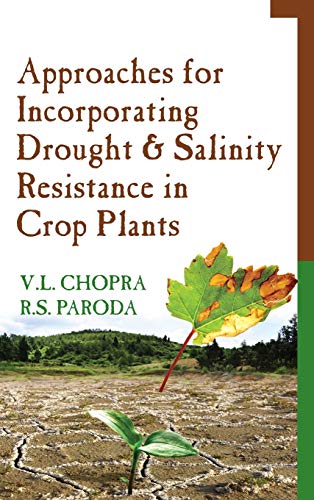Edited V L Chopra R S Paroda (1 results)
FeedbackSearch filters
Product Type
- All Product Types
- Books (1)
- Magazines & Periodicals (No further results match this refinement)
- Comics (No further results match this refinement)
- Sheet Music (No further results match this refinement)
- Art, Prints & Posters (No further results match this refinement)
- Photographs (No further results match this refinement)
- Maps (No further results match this refinement)
- Manuscripts & Paper Collectibles (No further results match this refinement)
Condition
- All Conditions
- New (1)
- Used (No further results match this refinement)
Binding
- All Bindings
- Hardcover (1)
- Softcover (No further results match this refinement)
Collectible Attributes
- First Edition (1)
- Signed (No further results match this refinement)
- Dust Jacket (1)
- Seller-Supplied Images (No further results match this refinement)
- Not Print on Demand (1)
Free Shipping
- Free Shipping to U.S.A. (No further results match this refinement)
Seller Rating
-
Approaches for Incorporating Drought and Salinity Resistance in Crop Plants
Published by New India Publishing Agency, 2015
ISBN 10: 9383305746 ISBN 13: 9789383305742
Seller: Vedams eBooks (P) Ltd, New Delhi, India
First Edition
Hardcover. Condition: New. Dust Jacket Condition: New. 1st Edition. Contents: 1. Salt-affected soils: an overview/I.P. Abrol. 2. Breeding crop varieties for salt-affected Soils/R.S. Rana. 3. Drought resistance in crop plants: a physiological and biochemical analysis/Suresh K. Sinha. 4. Breeding approaches for drought resistance in crop plants/R.S. Paroda. 5. Screening techniques for drought resistance in rice/T.T. Chang and Genoveva C. Loresto. Index. Crop growth and productivity is limited by a large number of adverse conditions of ambient environment and soil composition. Among these, drought and soil salinity are most prevalent stresses. In view of shrinking land resources and continuing pressures of growing population in most developing countries, it has become imperative that crop yields are not allowed to suffer on any type of cultivable land. Breeding crop varieties resistant to drought and salinity stress, therefore, assumes great importance. Major limitations to exploiting genetic resistance have been the lack of (i) definition of the level of stress that is relevant to crop productivity, (ii) screening procedures that can be reliably employed for identifying genotypes possessing attributes governing stability of performance under stress conditions, and (iii) Understanding of the processes that have direct as well as indirect relevance to conferment of resistance. This book presents the much-needed information on drought and salinity stress under one cover. Chapters have been contributed by a leading authority and practitioner of his own field of specialization. The book will be an indispensable source of information for students and researchers interested in the subject of drought and salinity stresses and breeding approaches for achieving resistance to these stresses.


